The 3 Ways Organizations Are Completing RPA Migrations in 2023
Every year, Blueprint conducts market research on the state of RPA migrations. One of the main objectives of the research is to better understand how organizations are migrating their RPA estates to next-generation intelligent automation platforms like Microsoft Power Automate.
Specifically, we want to understand how much organizations are budgeting for RPA migrations and their projected and actual project timelines. We’re also very interested in identifying whether organizations plan to complete their RPA platform switches manually or if they’re planning on using an RPA migration solution.
According to Blueprint’s State of RPA Migrations in 2023 research report, here’s what we uncovered.
RPA Migration Budgets
One of the biggest impediments of RPA migrations is the cost of executing them. Switching RPA platforms was traditionally a very expensive endeavour because it was entirely manual. Organizations were forced to rebuild all their automations from scratch so that they would work in the destination RPA platform.
Even though there are tools like Blueprint’s RPA Migration solution that drastically reduce the cost and effort of switching RPA tools, migration still requires some investment and resources.
According to Blueprint’s research, organizations that were both in the process of their RPA migration and those currently considering switching RPA platforms expected to budget $500,000 for the entire migration exercise. That figure was similar to Blueprint’s results in the 2022 edition of the same research.
There was, however, some variance for the respondents who had already switched their RPA platforms. Those companies that had already migrated their RPA estates to new platforms reported an average cost of $300,000 in doing so.
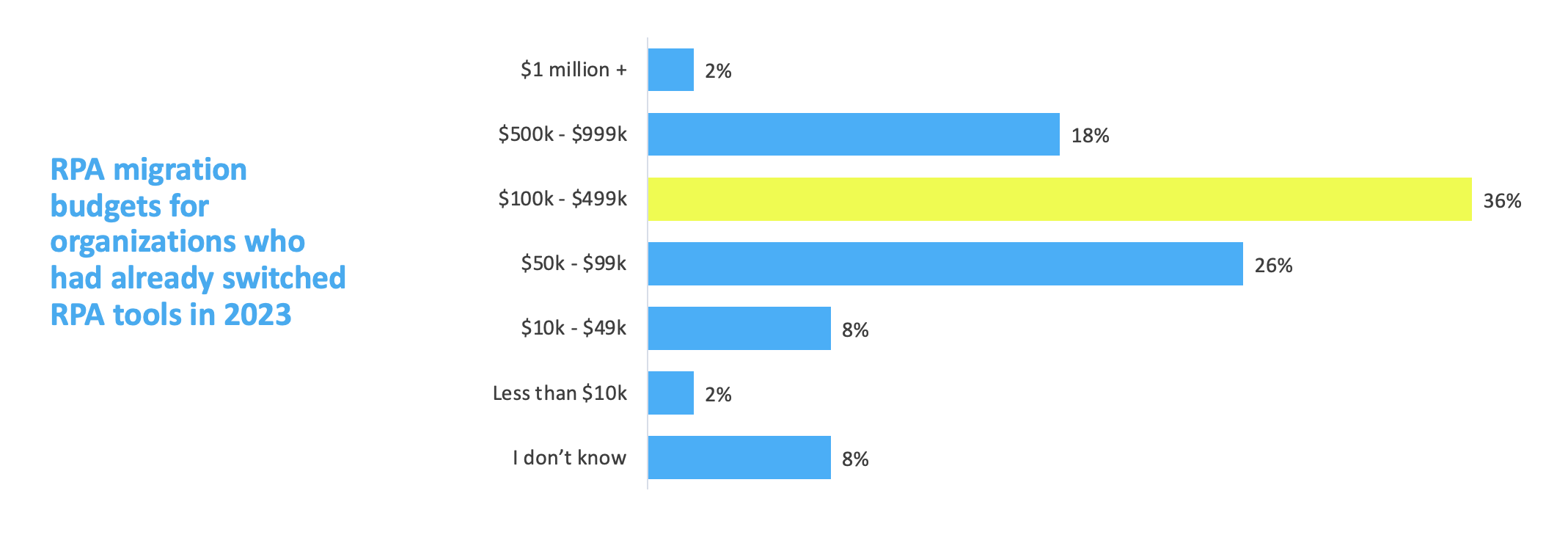
One explanation for this variance is that in 2022, organizations reported that they were migrating an average of 120 automations to a new RPA platform. In 2023, the average RPA estate that was being migrated came in at 70, hence the decrease in migration costs.
The existence of RPA migration solutions like Blueprint can also be a major cause in reducing the cost of RPA migrations in 2023 and for years to come.
RPA Migration Timeline
Even with technical solutions that significantly reduce the effort needed to execute RPA migrations, some human intervention is still required to ensure newly migrated automations are production ready. The planning, development adjustments, testing, and deployment of migrated automations is still a significant project that requires accurate timelines.
Across the board, organizations reported and projected an average of 7-12 months to complete their switch from a legacy RPA tool to a next-generation intelligent automation platform. Those figures remained consistent with the data that was collected in 2022.
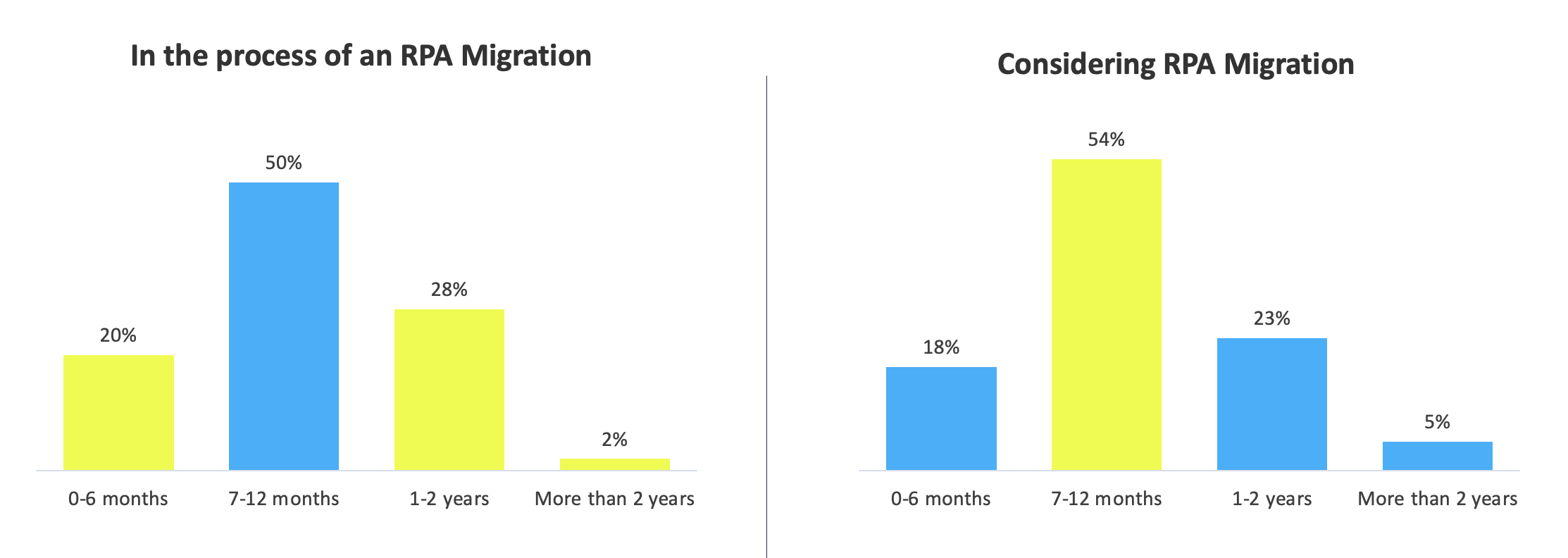
For organizations that had already completed their RPA migration projects, they reported an average duration of 11 months to complete their switches, slotting in nicely into the 7-12 month range that companies in the process of and considering migration anticipated.
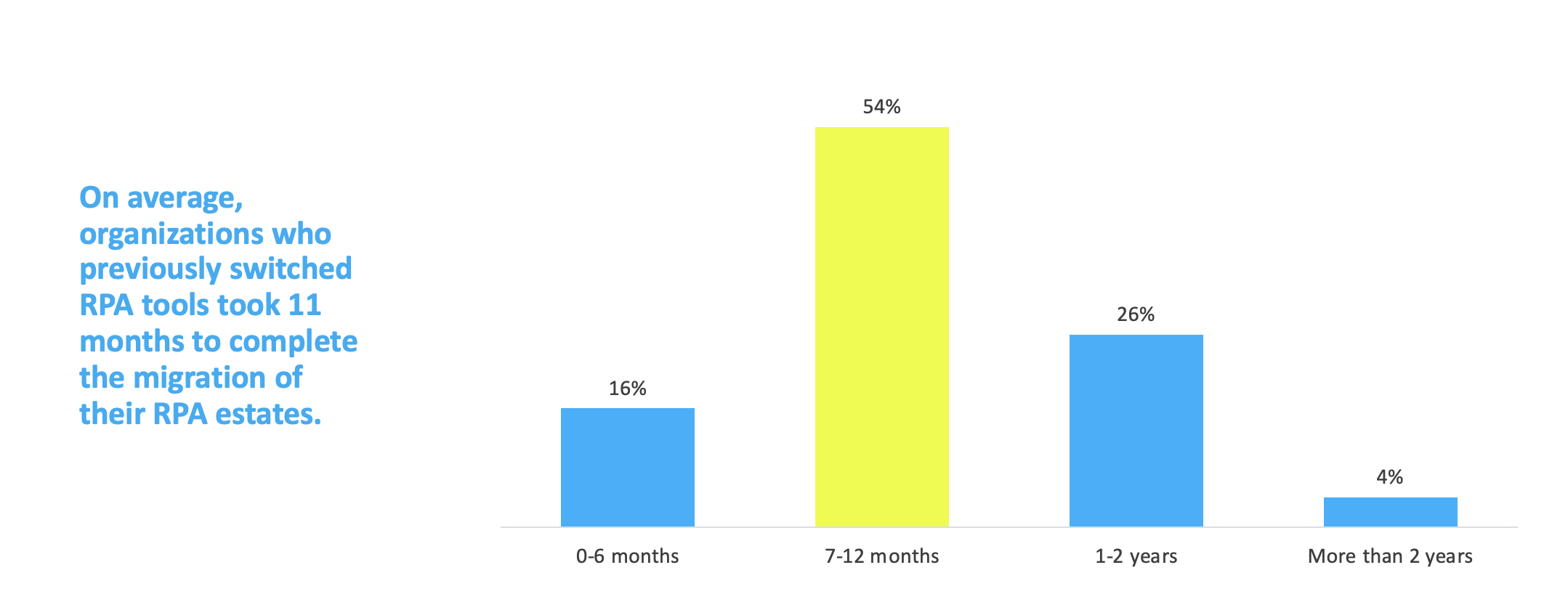
RPA Migration Execution
There is a lot of complexity when migrating RPA estates to new platforms, so naturally, there’s a lot of interest in how companies are completing their migrations. Are they doing it manually or procuring the help of a technical solution that can minimize the effort and time it takes to migrate their RPA estate to a new platform?
According to Blueprint’s recent research, organizations that had already completed their RPA migrations were predominantly doing so using a third-party technology provider. In 2023, 64% of organizations that already switched RPA vendors reported that they procured an RPA migration solution. In 2022, the results for this segment were almost identical at 61%.

Organizations considering RPA migration overwhelmingly reported that they planned on using a third-party RPA migration solution (71%) instead of opting to complete their switch manually with internal resources. This could be a byproduct of thorough due diligence as organizations investigate the most cost-effective and efficient ways to migrate RPA estates with emerging case studies and success stories from current technology providers.
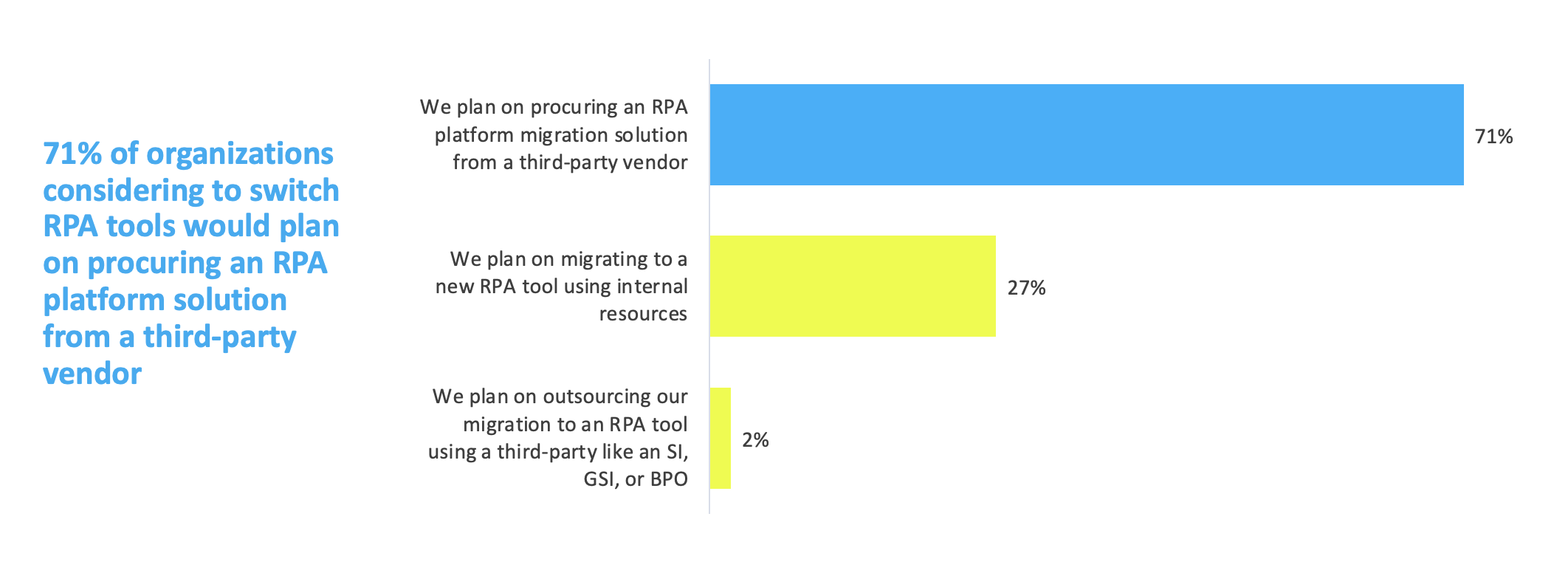
Curiously however, the organizations in the process of switching RPA platforms reported that they were planning on executing their migration manually with internal resources. Those figures follow the same trends from 2022. One possible explanation for this variance compared to other segments of respondents is that those in the process of RPA migrations fully plan to carry them out internally and manually. However, as complexities and challenges pile up, they quickly look for technical help to finish their switches.
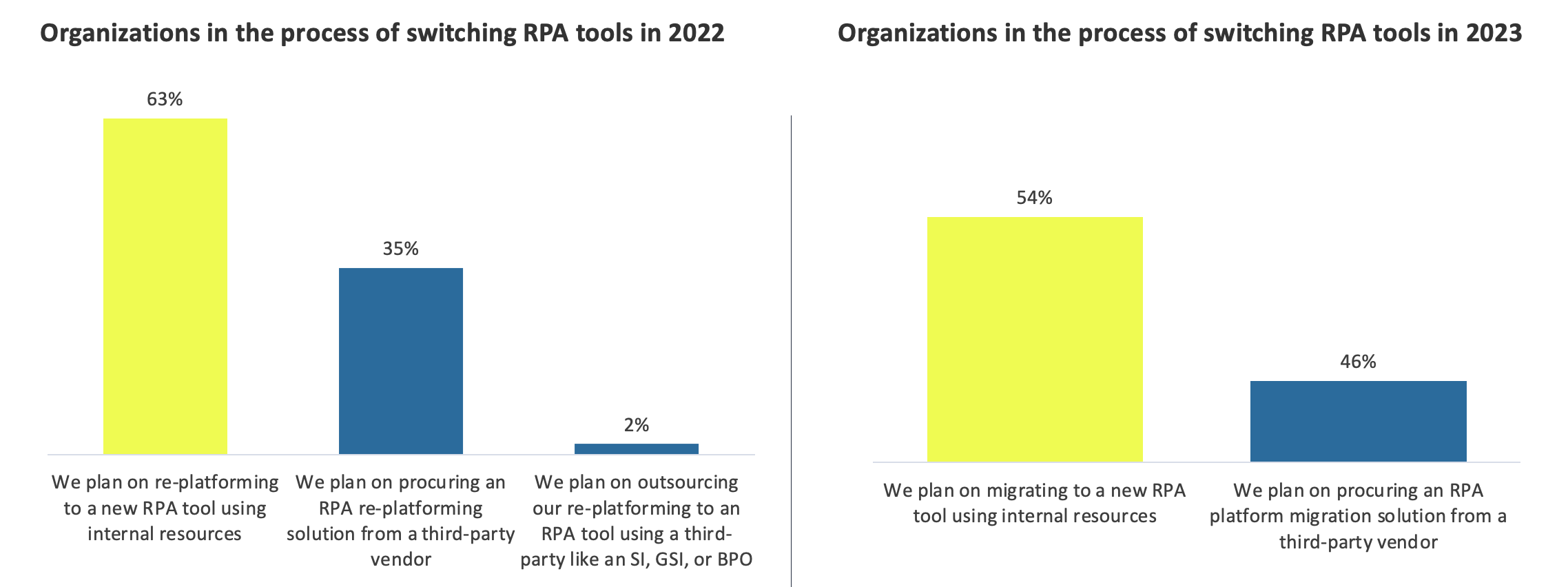
How organizations are migrating their RPA estates to new automation platforms is only one component of the rich insight and visibility Blueprint’s research report offers on the state of RPA migrations in 2023.
For your very own free copy of the report and all the data and information it delivers that can help you make better decisions for your automation needs, click the link below.
Share this
Recent Stories

12 Application Considerations When Migrating RPA Estates to Microsoft Power Automate

How to Estimate a Manual RPA Migration


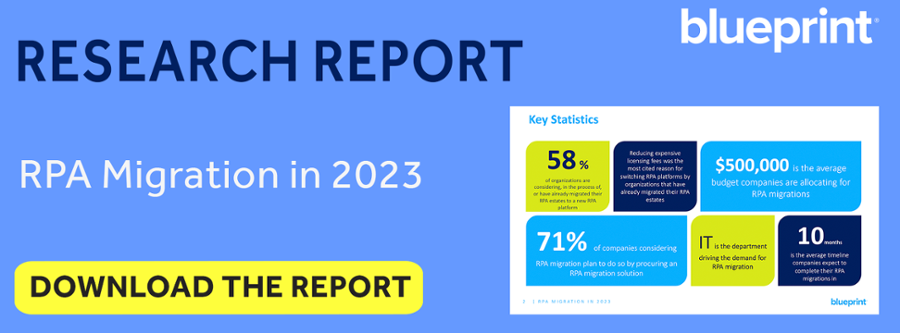

.jpg)